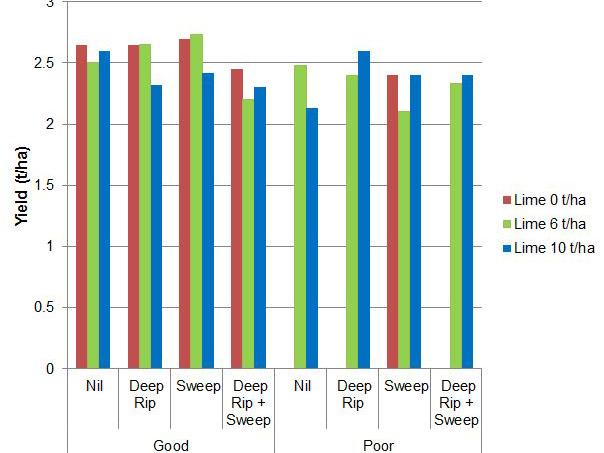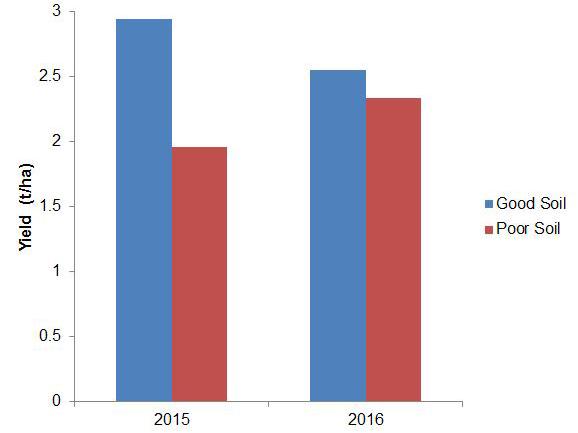Background
The most common rate of agricultural lime application is one tonne per hectare as a blanket application across the surface of the whole paddock (Taking soil acidity seriously - results of grower surveys 2012, page 118).
This amount is often insufficient to recover and maintain soils above recommended targets of pH 5.5 and 4.8 in topsoil and subsoil, respectively.
As a result of Caring for Country project SP11-01226, growers in Western Australia are increasingly testing pH of soils below 10cm.
Growers understand the importance of lime in restoring soil pH, as seen by the increase in sales of lime in the northern wheatbelt (Liebe group technical audit results 2012).
However, according to Gazey and Andrew, lime sales of 1.1 million tonnes in 2012 (Effective management of soil acidity requires knowledge at the farm, state and national scale) are still less than half that of the 2.5 million tonnes required per year, indicating low adoption of the recommended practice.
Preliminary work by Davies, 2012 (Developing and assessing agronomic strategies for water repellent soils, page 71) has shown the applicability of a number of innovative techniques, including mouldboard ploughing and rotary spading, for incorporation of lime to depth.
Lime on the topsoil can be incorporated to a depth of 30cm enabling management of pH at this depth.
This trial is one of six similar trials throughout the northern wheatbelt. It will help establish best practice methods and promote the effectiveness of these techniques throughout the rainfall zones of the northern agricultural region.
Aim
The purpose of this trial was to determine the value of large amounts of lime, and the influence of deep ripping, on the poor soil patches within paddocks.
Trial details
| Property | Westons, East Yuna |
|---|---|
| Soil type | Red loamy sand |
| Paddock rotation | 2014 wheat, 2015 wheat, 2016 wheat |
| Treatments | 2015 - Lime: 0, 6, 10t/ha 2015 - Incorporation: Nil, Deep ripper (before lime was spread), 12” sweep on 11” spacing, Deep ripper + sweep |
| Replicates | Six |
| Growing season rainfall 2016 - Second season (Wandana rainfall station) | January – March 22mm April – September 198mm |
Results
Note; pH discussed as pH (1:5 CaCl2)
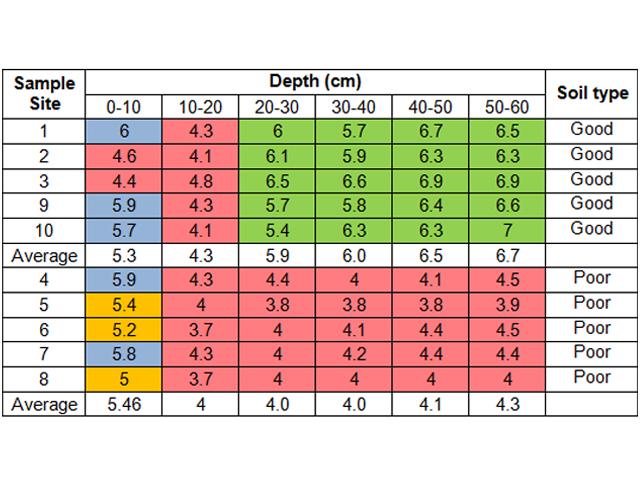
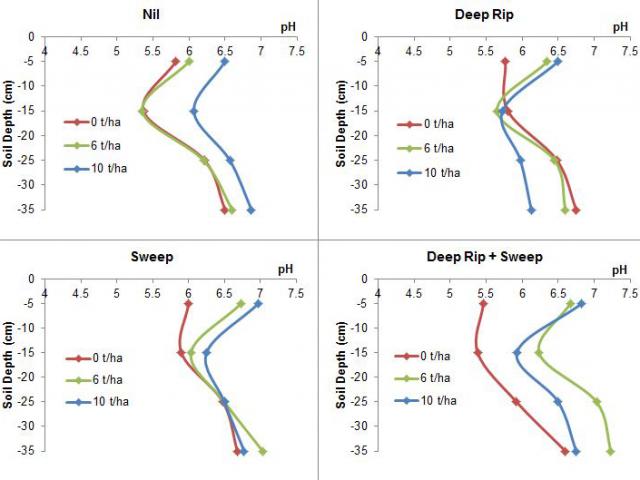
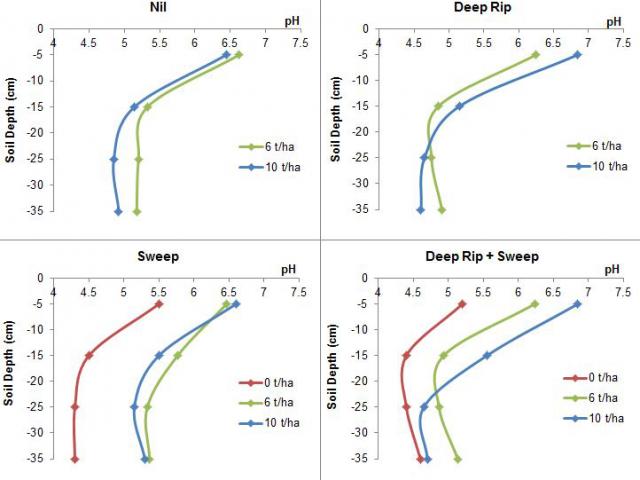
Comments
Two soil types are present within the East Yuna demonstration site (Table 1). The soils are best described as red loamy sand with good pH in the subsurface and red loamy sand with poor pH throughout the profile.
A good pH in the subsurface is above pH 4.8. Due to plot size it was not possible to have equal replication for each treatment in each soil type. Deep ripping x 0t/ha and Nil incorporation x 0t/ha were not within the area of poor soil.
Deep ripping treatment occurred prior to the application of lime and has not improved sub-surface pH (Figure 1).
To increase possibility of lime incorporation the ripping should occur after the lime has been applied.
While not used in this trial, slot openers can be added to the back of the deep ripper tine to allow topsoil to fall in behind and down to the depth of ripping improving the sub-surface pH.
The sweep and deep rip + sweep treatments have improved the subsurface pH (Figure 1 and 2).
Plants emerging within the area of the poor soil improved this season and were close to matching the plant numbers in the good soil area. Later in the season the head numbers of wheat were lower in the poor soil, this being one of the reasons for the lower yield in comparison to the good soil. However, the yield on the poor soil areas, in comparison to the good soil areas, has greatly improved since the previous season (Figure 4). This is starting to show the value of lime application and incorporation on targeted areas of soil with low pH.
Acknowledgements
Thanks to Kim and Jason Batten at Yuna for managing the trial; also to DAFWA technical services staff for their assistance and SoilTech for soil sampling.
This project is supported by the Northern Agricultural Catchments Council, through funding from the Australian Government’s National Landcare Programme.

